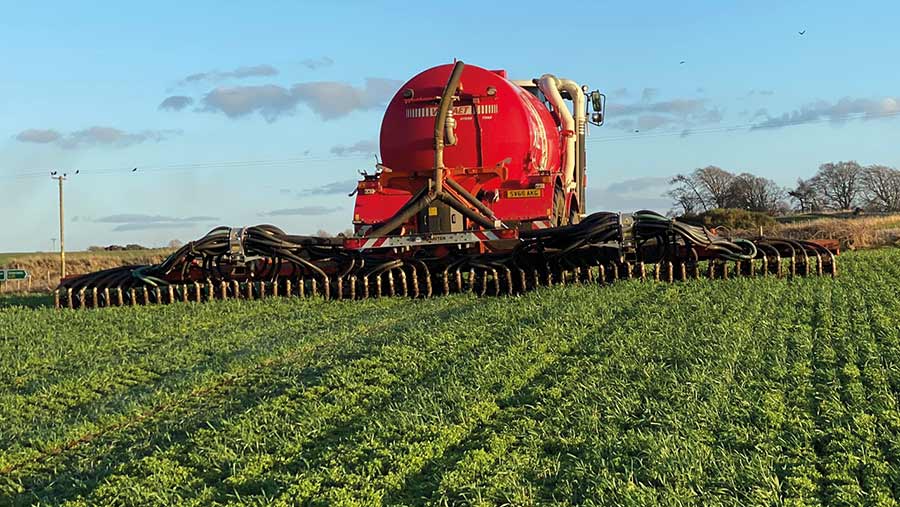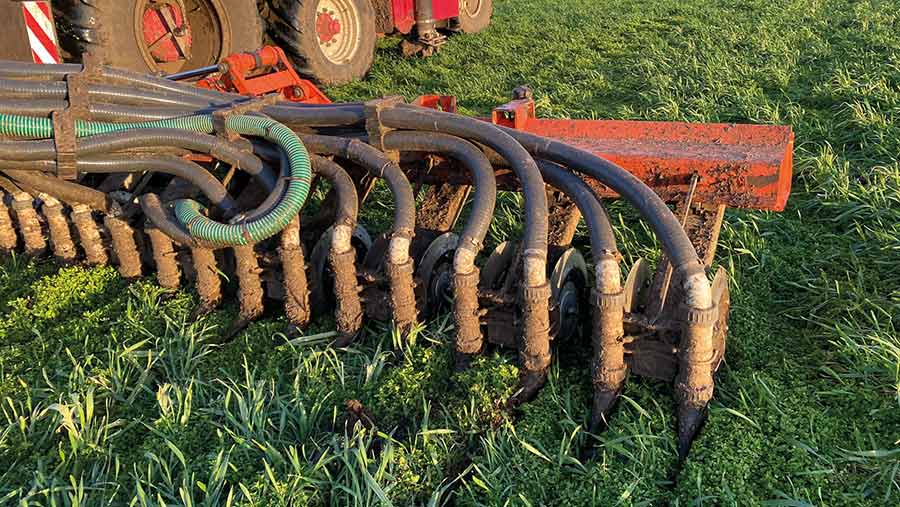Digestate offers viable alternative to inorganic fertilisers
 © SAC Consulting
© SAC Consulting As fertiliser prices continue to rise, farmers are being encouraged to explore the benefits of spreading digestate on-farm, as a cost-effective and nutritious alternative.
According to a new study from SAC Consulting – part of Scotland’s Rural College (SRUC) – as fertiliser prices have increased, so too has the financial value of bulky organic materials, including digestates from AD plants.
See also: Tips and pitfalls of using digestate as crop fertiliser
“AD plant managers are seeing increased interest in their products, farmers are enquiring about purchasing digestates for the first time, and those already using them are particularly keen to gain maximum value from the fertiliser nutrients within them,” says the report.
Fiona Salter, of SAC Consulting, says that, when used appropriately, digestate can be a great source of nutrients for the farm, though it is not without its risks.
“We know that many farmers are struggling right now with the rising costs of fertilisers, and we hope that we can provide insight into the nutrient benefit of using digestate appropriately and how to calculate the fertiliser replacement value.”
The report includes an explanation of anaerobic digestion and feedstocks, an assessment of the market, and advice on managing potential hazards (such as the build up of heavy metals in the soil, or the presence of plastic).
It also includes the regulatory controls around digestate use in Scotland, and the nutrient and financial values.

© SAC Consulting
Case study
One farmer who has been using and building up experience with digestate is William Rose of Mid Coul Farms, Dalcross, Inverness-shire.
The farm runs to 1,300ha, including cereals, 800 finishing cattle and silage ground.
The silage is used both for the cattle and as a feedstock for the two AD plants on the farm, which produce gas and electricity for the national grid.
Combined, the AD plants take about 60,000t of silage, hybrid rye and farmyard manure a year.
They produce both liquid and solid digestate for spreading on the arable and grassland, primarily in the spring and after harvest.
It is spread using a Vervaet Hydro Trike XL tanker, with three low-pressure tyres and either a dribble bar or an injector for accurate application.
The two AD plants have storage for up to 20,000cu m of digestate, with another 15,000cu m of storage nearer to the point of use – essential to limit journey times and ensure efficient use of the spreader.
“Using digestate has really transformed our ability to grow bigger yields and more consistent crops,” said Mr Rose.
“If we can achieve our objective of using no bought-in fertiliser at all, even on relatively small areas, then we would feel very satisfied.”
As well as the financial advantages, using digestate also adds organic matter to the ground and improves the soil structure.
But Mr Rose advises farmers to read the guidance and use the products in the right way.
“Spreading digestate well is challenging,” he said. “You must have accurate spreading equipment and must at least have a dribble bar or some form of injection.
“Being able to spread accurately, and only where it is needed, is essential.”
More information
For more information, download a PDF of the guidance and listen to the two podcasts on the Farming and Water Scotland website.

